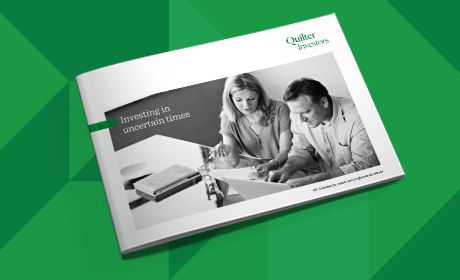Global stock markets have been experiencing turbulence recently, sparked by new tariffs introduced by the US. It’s a time of uncertainty that may leave you feeling unsettled.
However, at Quilter we have a long and successful history of guiding our customers through all kinds of markets.
Our Chief Investment Officer, Marcus Brookes, thinks it’s natural to feel concerned during these periods of market stress. “Panic can quickly take hold, and it’s completely normal to worry about what’s happening to your investment. But history shows us that markets have always risen and fallen, and they’ve bounced back from crises far worse than this one.”
Staying invested and thinking long-term is the best way to preserve - and grow - your wealth. Look for opportunities in challenging markets while keeping sight of your financial goals.
Here are seven essential principles to guide your investment strategy during turbulent times:
1. Seek professional advice
Investing isn’t a one-size-fits-all activity. Everyone’s financial needs and tolerance for risk are unique, which is why it’s crucial to have a tailored plan. A financial adviser can help you create one, while also providing calm and reasoned advice in more stressful times. Their expertise can help take the emotion out of investing, ensuring your portfolio remains balanced and aligned with your objectives. A good adviser could well be one of the best investments you ever make.
2. Have a plan - and stick to it
Setting a financial goal is one thing, but a well-thought-out plan is what turns dreams into reality. Ask yourself: What is my money for? When will I need it? And how do I achieve my targets? A clear plan allows you to focus on your long-term goals, avoiding distractions from short-term market fluctuations. Be realistic about your aims and avoid overambition, which could derail your progress.

